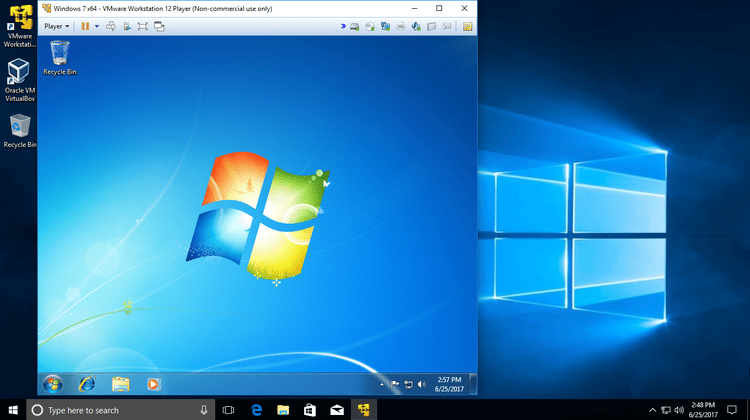Introduction to Virtual Machines
Ready to dive into the world of virtual machines and unleash the power of Linuxia? Virtual machines have revolutionized how we approach software development, testing, and everyday computing tasks. In this blog post, we will explore the benefits of using a virtual machine, provide you with a step-by-step guide on setting up Linuxia in a virtual environment, offer tips for optimizing performance, share tricks for seamless usage, tackle common troubleshooting issues head-on – all to help you make the most out of your Linuxia experience. Let’s get started!
Benefits of Using a Virtual Machine
Virtual machines offer many benefits that make them indispensable tools for modern computing. One major advantage is the ability to run multiple operating systems on a single physical machine simultaneously, allowing users to switch between environments easily. This flexibility is invaluable for developers and testers working with different platforms.
Another key benefit of using virtual machines is the enhanced security they provide. By isolating each virtual environment, sensitive data and applications are protected from threats and malware attacks. Additionally, VMs enable users to create snapshots or backups of their system configurations, ensuring quick recovery in case of errors or crashes.
Virtual machines also help save costs by reducing the need for additional hardware infrastructure. With VM technology, organizations can optimize resource utilization and streamline IT operations efficiently. Leveraging virtual machines brings efficiency, versatility, and security to your computing experience.
Step-by-Step Guide to Setting Up a Virtual Machine with Linux
Are you ready to dive into the world of virtual machines with Linuxia? Setting up a virtual machine might sound complex, but with our step-by-step guide, you’ll be up and running quickly.
First, download virtualization software like VirtualBox or VMware Player. These tools will allow you to create and manage your virtual machine effortlessly.
Next, select the Linuxia ISO file from the official website and use it to install the operating system on your virtual machine. Follow the on-screen instructions to complete the installation process.
Once Linuxia is installed, customize your VM settings for optimal performance. Allocate enough RAM and CPU resources based on your system’s capabilities.
Now that your virtual machine is set up start exploring all the features and functionalities of Linuxia. Familiarize yourself with the interface and try different applications to see what works best.
Stay tuned for more tips and tricks on making the most of your Linuxia experience!
Customizing Your Virtual Machine for Optimal Performance
When setting up a virtual machine with Linuxia, customizing it for optimal performance is key. Begin by allocating the right amount of RAM and CPU cores based on your system’s resources. This will ensure smooth operation without overloading your hardware.
Next, consider adjusting network settings to optimize connectivity. Setting up bridged networking can enhance communication between your virtual machine and other network devices.
Furthermore, fine-tune storage options to improve read/write speeds. Utilize disk caching and allocate sufficient space for efficient data handling.
Don’t forget to install necessary drivers and software updates regularly to maintain compatibility and security. Updating packages within Linuxia can also boost performance by incorporating new features and bug fixes.
By tailoring these settings to suit your specific needs, you can seamlessly maximize the efficiency of your virtual machine running Linuxia.
Tips and Tricks for Using Linuxia on a Virtual Machine
Exploring the world of Linux on a virtual machine opens up possibilities for customization and efficiency. To make the most out of your experience, consider utilizing keyboard shortcuts to navigate seamlessly within Linuxia. Familiarize yourself with the package manager to easily install and manage software applications tailored to your needs.
Take advantage of virtual desktops to organize your workspace efficiently, allowing for better multitasking capabilities. Experiment with different desktop environments in Linuxia to find one that best suits your workflow. Utilize terminal commands for advanced tasks and system configurations, enhancing your overall control over the virtual machine environment.
Stay updated with regular system updates and security patches to ensure optimal performance and protection against vulnerabilities. Engage with online communities or forums dedicated to Linuxia for valuable insights, tips, and troubleshooting advice from experienced users worldwide.
Common Troubleshooting Issues and How to Solve Them
It is not uncommon to encounter troubleshooting issues while setting up a virtual machine with Linuxia. One common issue users face is network connectivity problems within the virtual machine. This can often be resolved by checking network settings and ensuring proper network adapter configuration.
Another frequent challenge is related to storage allocation errors, which may occur due to insufficient disk space allocated to the virtual machine. Resizing the virtual disk or optimizing storage usage can help overcome this hurdle.
Users might also encounter performance issues such as slow responsiveness or lagging operations. Adjusting resource allocations like CPU cores and RAM in the VM settings can enhance its speed and efficiency.
Furthermore, compatibility issues with certain software or drivers could arise when running Linux on a virtual machine. Updating drivers, installing necessary packages, or seeking community support can address these compatibility concerns effectively.
Conclusion
Setting up a virtual machine with Linuxia can greatly enhance your computing experience. By following the step-by-step guide and customizing your virtual machine for optimal performance, you can enjoy all the benefits Linuxia offers in a controlled environment.
Remember to utilize tips and tricks for using Linuxia on a virtual machine to maximize efficiency and productivity. If you encounter any troubleshooting issues, refer to our guide for solutions.
Incorporating Linuxia into a virtual machine setup expands your technical skills and provides flexibility and stability in your work or personal projects. Explore the possibilities of this powerful operating system within a virtualized environment today.






